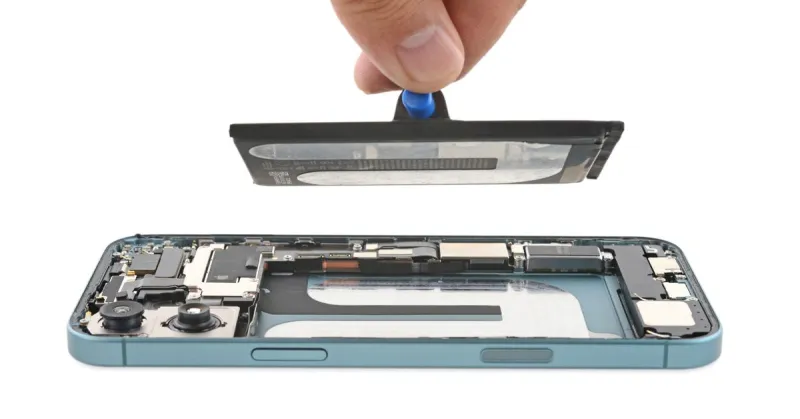
iPhone 16’s Electrically-Charged Battery Replacement Process
No sooner has the iPhone 16 lineup arrived than iFixit starts taking them apart, a process made easier this time by Apple’s day-one release of repair manuals. The disassembly shows that the Camera control is an actual button that moves, with a flex cable that likely measures force. The heat sink appears to be positioned to keep the A18 chip’s Neural Engine cool while handling AI workloads.
For this year’s refresh, the base iPhone 16 may be more interesting than the Pro model for one reason — it’s the first to use electrically debondable adhesive for its battery enclosure.
As reported in June, Apple isn’t using the new adhesive on all its phones yet, but we now know more about how it works in practice. Apple’s repair documents describe a process similar to Tesa’s debonding-on-demand demo.
After disconnecting the battery from the board, electric current is applied from a power source (a 9-volt battery for 90 seconds works), and the previously glued-in battery slips out easily, often with just gravity. To secure the adhesive for the new battery, all it needs is pressure.
Apple notes that over time, the release time could increase, but in brand-new phones, iFixit found that using a 20V current undoes the bond in five seconds, and Apple states up to 30V can be used. iFixit also provided microscopic close-ups of the battery frame, revealing the machined ridges that help the battery adhere securely.
For this year’s refresh, the base iPhone 16 may be more interesting than the Pro model for one reason — it’s the first to use electrically debondable adhesive for its battery enclosure.
As reported in June, Apple isn’t using the new adhesive on all its phones yet, but we now know more about how it works in practice. Apple’s repair documents describe a process similar to Tesa’s debonding-on-demand demo.
After disconnecting the battery from the board, electric current is applied from a power source (a 9-volt battery for 90 seconds works), and the previously glued-in battery slips out easily, often with just gravity. To secure the adhesive for the new battery, all it needs is pressure.
Apple notes that over time, the release time could increase, but in brand-new phones, iFixit found that using a 20V current undoes the bond in five seconds, and Apple states up to 30V can be used. iFixit also provided microscopic close-ups of the battery frame, revealing the machined ridges that help the battery adhere securely.